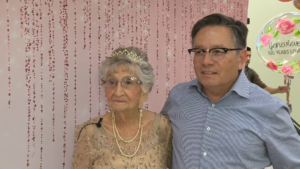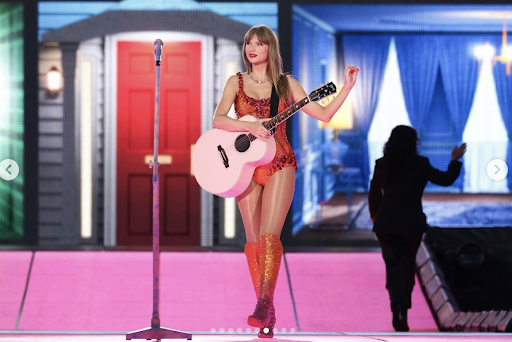
doyouremember.com
Woman Celebrating 100th Birthday Says She Eats And Drinks “Everything And Anything”
What is the secret to a long, high-quality life? More and more people are reaching triple digits in their age, yet humanity is not quite settled on a single, concrete answer. For centenarian Genevieve Najera, however, the answer involves—at least, in part—whatever meal or beverage she fancies at any given instant.
On Saturday, July 27, Najera was joined by family and friends as she ushered in another trip around the sun—and her very first entire century spent on this earth. Despite all the years behind her, as far as Najera is concerned, she feels like she might as well have just celebrated her 39th birthday, not 100th. What is her secret?
Centenarian Genevieve Najera celebrates her 100th birthday with a celebration fit for a queen
Genevieve Najera and her eldest grandchild, Raymond / YouTube screenshot
In Texas, just off of Highway 90, the San Antonio Food Bank Event Center played host to Najera’s 100th birthday party. There, attendees included not one or two—but four whole generations of the Najera family that she has gotten to share this earth with.
RELATED: 101-Year-Old Florida WWII Veteran Shares Stunning Secret To Long Life
During an interview, Najera delightedly proclaimed, “I’m the Queen of England!” In keeping with this sentiment, she wore a glittering tiara whose glamour matched the long rope of pearls, shining earrings, and shimmering cream-colored dress bedazzled with sparkling detailing.
Around her and her fellow partygoers, Mariachis performed, eventually breaking out into Las Mañanitas, the traditional birthday song of choice in Mexican culture.
The secret to her success
Najera doesn’t stress and eats and drinks whatever she wants / YouTube screenshot
Najera has a relatively simple formula for maintaining her long life. Primarily, she minimizes how often she feels stressed, and from there, she lets God take it from there.
“And I don’t sleep during the day,” she further shared. “I eat everything, and I can drink anything. You give me a beer now and I’ll drink it!”
Mariachis sang to her the traditional Mexican birthday song / YouTube screenshot
Despite this straightforward strategy, Najera is a marvel to her family. “It’s incredible to see her at this age,” gushed ehr oldest grandchild, Raymond. “She’s the new centenarian. It’s just amazing to see her, born almost at the turn of the century, reaching this point and seeing everything throughout our history. She’s seen things a lot of us have not experienced.”
Click for next Article
The post Woman Celebrating 100th Birthday Says She Eats And Drinks “Everything And Anything” appeared first on DoYouRemember? - The Home of Nostalgia. Author, Dana Daly

















